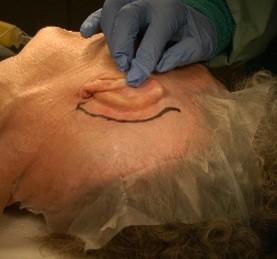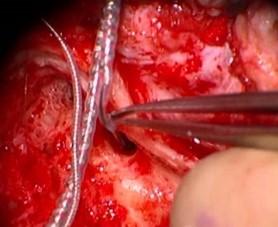Overview
Cochlear implantation is considered to be a maximally invasive procedure for patients and is performed under general anesthetic. Typical operative time is 3-4 hours per ear and may require an overnight stay if the patient has multiple comorbidities.
Step 1
An incision is made behind the outer ear (pinna) or within the hairline to expose the mastoid bone and minimize visible scar tissue post-operatively.

Step 2
Once the bone of the skull is visualized, a mastoidectomy and partial facial recess are drilled to expose the middle ear space and cochlea. This portion of the surgery is the longest in duration and comprises the majority of operative time.

Step 3
After the facial recess is completed, the surgeon identifies the round window of the cochlea for insertion of the electrode. Electrode insertion into the cochlea can be achieved directly through the round window membrane or by drilling a separate entrance into the cochlea called a cochleostomy. The insertion of the electrode must be achieved quickly with minimal barriers to ensure minimal exposure of the brain to external pathogens.

Step 4
Once the electrode is in place, the receiver-stimulator is sutured to the bone of the skull and the incision is closed and bandaged.
Healing time is approximately 4 weeks before activation to allow for the wound to heal and for swelling around the implant site to reduce. Excessive swelling makes it difficult to keep the external sound processor secured as it is held by a magnet.



